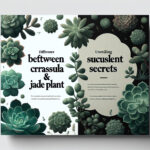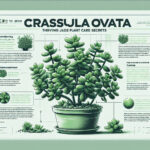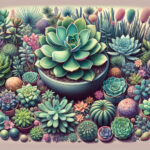Introduction to Crassula and Jade Plants
Embark on a botanical journey that delves into the fascinating world of succulents. Here, we navigate the unique descriptors that illustrate what it means to be a Crassula and the connection these plants have with the term ‘Jade plant’ held dearly by many enthusiasts. Our exploration starts at the very core, unfolding the origins and the intricate botanical background that knits together this group of robust beauties.
Imagine stumbling upon a serene garden, a tapestry of green laced with robust, fleshy leaves, and amidst this verdant oasis, you find the resilient Crassula. Known for its ability to thrive in diverse conditions, this genus encompasses a rich variety of shapes and sizes, each resonating with nature’s extraordinary adaptability.
For those new to succulents, a visit to our comprehensive guide on perfecting your succulent care routine might paint a lusher picture of Crassula’s nurturing needs—a valuable peek into the realm of effortless gardening. It’s moments like these, when you realize that the simplicity of succulent care can indeed translate to flourishing green companions.
Often, the term ‘Jade plant’ is lovingly interchanged with Crassula, primarily due to one of its most famous members, Crassula ovata. This stately plant, with its glossy jade-green leaves, mimics a miniature tree that has etched its silhouette in countless homes and cultures, symbolizing prosperity and fortitude. But is every Jade a Crassula, or is there more beneath the surface? The uncovering of this tale requires a peek into the leafy heritage and botanical classifications that draw the line and also blur the boundaries between these wondrous succulents.
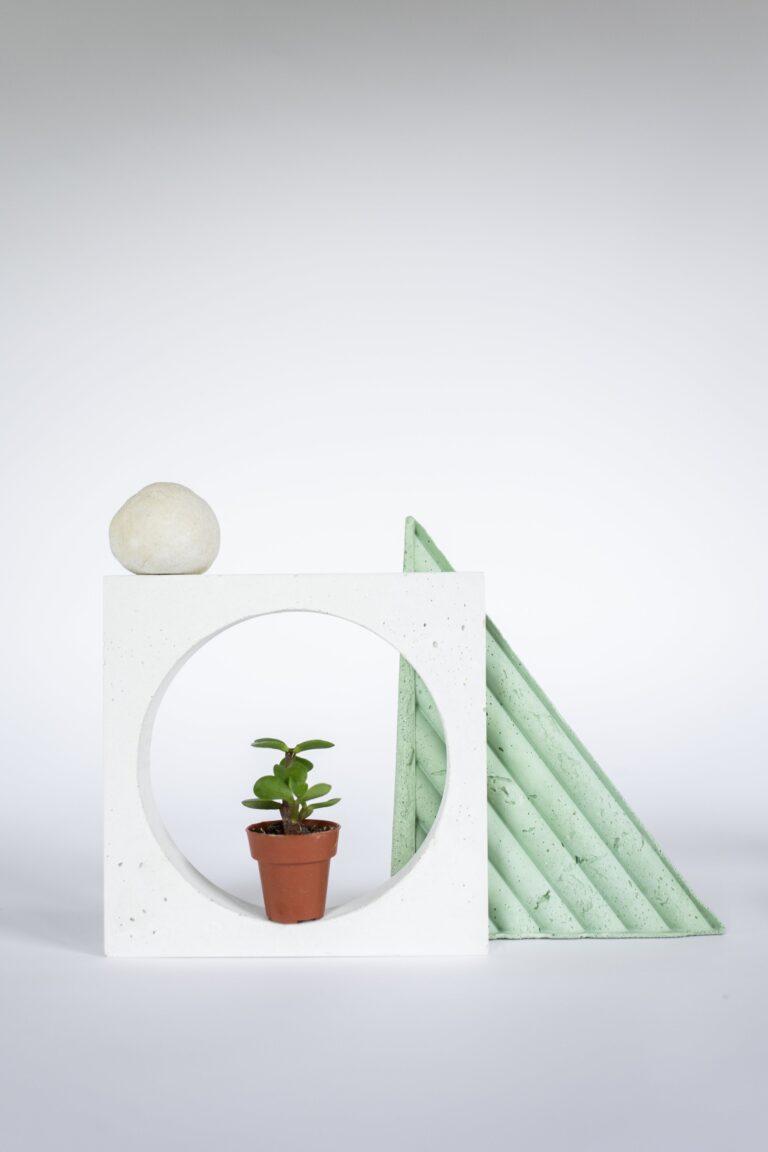
As we delve deeper, we find that ‘Jade plant’ becomes a homely nickname for several succulents bearing similar lush, jade-colored leaves, yet not all bear the Crassula lineage. Thus, our investigation becomes more than a simple yes or no answer; it’s an unraveling of botanical tapestries, a discovery that there’s more than meets the eye in the succulent world.
Whether you’re a seasoned gardener or a curious novice with an affinity for succulents, the Crassula family welcomes you with open branches. As you trail your fingers over their firm leaves, know that the story of the Crassula is interwoven with that of the Jade plant—a tale that ebbs and flows with the tides of botanical nomenclature and the sentiments of plant aficionados worldwide.
The Crassula Family: A Diverse Succulent Genus
When you hear “jade plant,” chances are you’re picturing the thick-foliaged Crassula ovata, a beloved houseplant worldwide. But let’s widen the lens and reveal the tapestry of diversity within the Crassula genus. This remarkable plant family has mastered the art of adaptation, flaunting an array of forms that could very well populate a botanical fantasy novel.
Imagine a verdant forest where 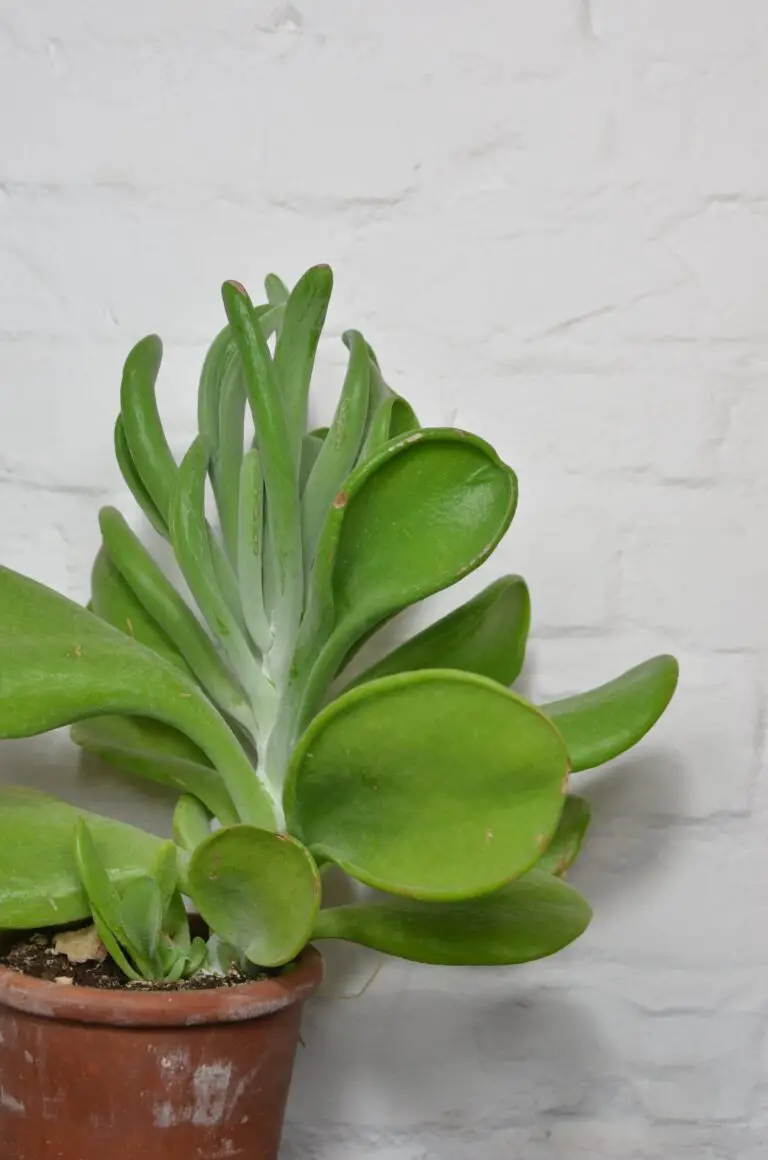 towering Crassula trees stretch upwards, their branches heavy with jade-like leaves. These giants of the genus remind us that, like characters in a story, plants too can be protagonists in their own environments.
towering Crassula trees stretch upwards, their branches heavy with jade-like leaves. These giants of the genus remind us that, like characters in a story, plants too can be protagonists in their own environments.
Take a stroll down the lane of Crassula varieties and you’ll stumble upon the tiny, yet mighty, miniature rosettes that seem crafted for the pages of a fairy tale. These minuscule mavericks huddle in clusters, showcasing their resilience by thriving in rock crevices and rugged terrain, symbolizing determination and strength in the face of adversity.
Whether gigantic or diminutive, the Crassula family knows a thing or two about survival. With its members dispersed across various regions, they’ve adapted to an impressive range of climates and conditions. In each locale, these succulents are a testament to nature’s capacity for innovation and creativity.
For those eager to invite these stoic survivors into their own homes, it’s important to note that adequate care is crucial to ensure they flourish. While the Crassula can be forgiving, learning their language—sunlight preferences, watering rituals, and temperature comforts—is key to a harmonious relationship.
The Crassula genus stands out as a proud family of resilience and diversity. With each species carrying its own unique story, they collectively paint a colorful backdrop to the world of succulents.
Crassula Ovata: The Classic Jade Plant
Embark on a journey through the lush, green world of Crassula ovata, affectionately known as the Jade plant, and unravel why this glossy gem is a staple in the realm of horticulturists and hobbyists alike. Dive into the heart of its allure, as we explore the exceptional characteristics that make it the classic Jade plant, a cherished addition to any plant collection.
Imagine a robust, woody stem boasting chubby, oval leaves with a glossy finish; this is the quintessence of the Jade plant. It’s not just its resplendent appearance that wins hearts, but also its legendary resilience. Whether perched on a sunny windowsill or adorning an office desk, the Jade plant thrives with a touch of neglect, asking for little more than a whisper of water and a kiss of sunlight.
Avid collectors often regale tales of their Crassula ovata’s journey, from petite potted novices to impressive, tree-like specimens. These plants mirror age with grace, developing thick, woody trunks that offer a visual chronicle of their years. It’s this growth into a magnificent mini-tree that endears them to those seeking a touch of verdant longevity.
Within the leafy embrace of the Jade plant, there is a lesson of adaptability. Originally hailing from the arid landscapes of South Africa, it stands as a beacon of survival, seamlessly blending into our homes and hearts. If you’re enraptured by the beauty and strength of houseplants, our guide to nurturing these stoic beings will elevate your indoor gardening game to new heights.
Enriching your living space with a Crassula ovata is more than adding a splash of green; it’s about welcoming a living sculpture that interweaves the art of nature with ease of care. For those keen to earn their green thumb, the beginner’s guide to caring for Crassula is a treasure trove of tips and insights.
Gazing upon the lush foliage of the Jade plant in your urban oasis, you can’t help but feel a surge of pride in your botanical companion. And while the plant may seem self-sufficient, it’s your nurturing that cultivates its splendor—a testament to the harmony between human and plant.
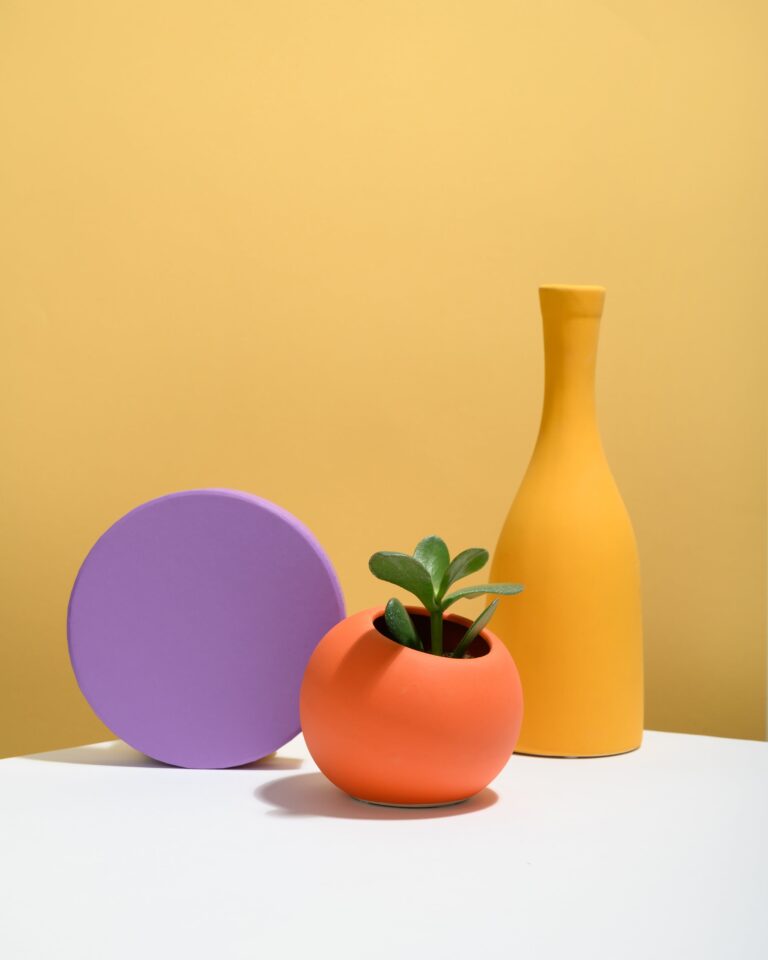
Consider the Jade plant’s journey as an echo of your own – flourishing under the right conditions and blossoming with a little patience and persistence. Let the Crassula ovata be a symbol of growth, resilience, and timeless beauty in your plant-loving journey.
Varieties of Jade Plants Within the Crassula Genus
When we talk about the quintessential Jade plant, Crassula ovata often takes center stage, but did you know this genus is like a treasure trove brimming with diversity? Let’s delve into the Crassula genus and discover the array of Jade plant species that have been captivating enthusiasts around the world.
First on the roster is the classic Jade, Crassula ovata, with its thick, glossy leaves and tree-like stature, often associated with prosperity and good luck. However, it would be a faux pas to overlook its cousins, such as the ruffled Crassula arborescens, or the delicate Crassula ovata ‘Gollum’, with tubular leaves that resemble otherworldly fingers reaching out for light.
No less impressive is the Crassula perforata, aptly named ‘String of Buttons’, with its stacked leaves forming a mesmerizing geometric pattern. Then there’s the Crassula rupestris, with its tight rosettes and red-tinged edges, which thrive under the gentle caress of the sun’s rays. Imagine each of these plants with their distinct features, coming together in a stunning display of the Crassula genus’s adaptability and charm. They make not only a green statement in your abode but also a testament to nature’s artistic flair.
Spotting these varieties often becomes a delightful scavenger hunt for those with a sharp eye. Take the Crassula capitella, for instance. When its leaves blush red from the kiss of the sun, you can’t help but stop and admire what looks like a miniature flame in your garden. And if you’re lucky enough to have a Crassula mesembryanthemopsis grace your collection, its water-storage leaves and dainty blooms could very well be a conversation starter amongst friends.
It’s not just about the show, though; knowing how to nurture these gems is key. Each species has its quirks and preferences, from light requirements to watering schedules. But once you’ve mastered the art of care, these Jades will reward you with growth and, in some cases, clusters of starry flowers that appear like unexpected treasures.
To truly appreciate the diversity of the Crassula genus, one must witness their resilience and beauty firsthand. As you grow and tend to these Jade plants, you become part of their story—a green-thumbed narrator recounting tales of leafy splendors.
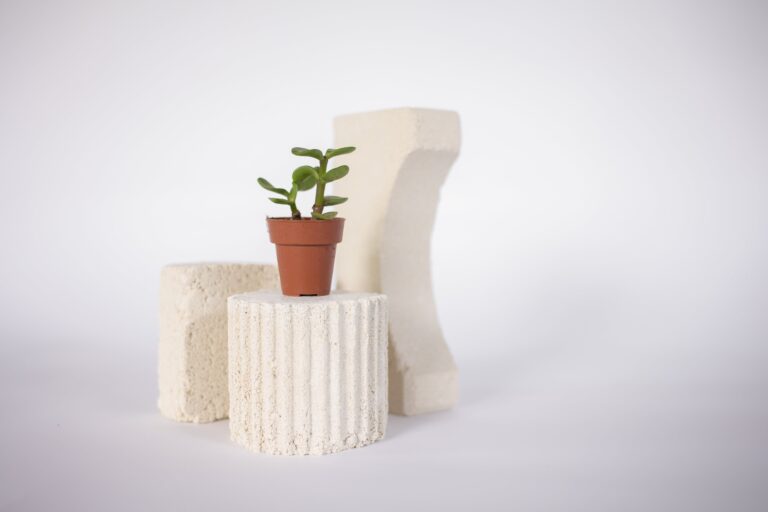
Caring for Your Crassula Jade Plant
Oh, the Crassula Jade Plant – a gem among succulents with its robust structure and lush, jade-colored leaves! Just like a cherished piece of jewelry, it requires just the right amount of attention to truly sparkle. So, let’s roll up our sleeves and explore how to nurture these splendid green friends of ours.
Soak Up the Sun, But Not Too Much!
Imagine basking in the gentle morning sun – that’s exactly what our verdant buddy here craves. The Crassula Jade Plant is a connoisseur of light, preferring a cozy spot with indirect sunlight to mimic its natural South African habitat. Direct, harsh midday rays? Not so much. Just like us, it can’t handle too much sunbathing without getting a bit sunburned – an affliction our green pals display by exhibiting red-tinged leaves.
Quenching Thirst the Right Way
When it comes to watering, the Crassula Jade Plant is as self-sufficient as they come. These drought-tolerant beauties like their soil to completely dry out before getting another drink. Overzealous watering can lead their roots to throw a fit, and by fit, I mean rot – not exactly the plant equivalent of a spa day, is it? Give them a thorough douse, and then leave them be, like someone who knows when to leave the party at just the right time.
The Perfect Soil for an Unfussy Plant
Soil that’s crumbly, airy, and just the right kind of gritty – sounds like a dessert recipe, but it’s actually the go-to soil mix for our Crassula friend. A succulent mix does the trick, offering a no-fuss, well-draining foundation. This keeps our plant firmly rooted and happy, without any soggy feet – because nobody likes wet socks, not even plants.
Keeping it Cool (But Not Too Cool)
While Crassula can hang tough, they do have a sweet spot when it comes to temperature. Think of a mild spring day – that’s the kind of climate they adore. Temperatures hovering between 60-75°F (15-24°C) make them feel right at home. But beware, winter’s chill is not their friend. If the mercury dips below 50°F (10°C), it’s time to bring these green gems indoors for some warm cuddles.
Curious to see how all these tips play out in real life? Let’s take a peek! Here’s an insightful video that shows these care requirements in action. Watching another green thumb at work can always inspire us to become better plant parents, don’t you think?
Remember, so much of plant care is tuning into the non-verbal cues they give off. With a bit of practice, you’ll soon be speaking fluent Crassula Jade Plant, ensuring a thriving and vibrant companion that adds a touch of jade elegance to your space. Nurture them with these tips, and they’ll repay you by transforming your surroundings with their serene presence. Happy gardening!
Common Myths About Crassula and Jade Plants
Amid the vast array of succulents, the Crassula family often finds itself in a pot of hot debate—is it the quintessential jade plant, or is this a case of mistaken identity? To clear the air, let’s get our gardening gloves on and dig through some common myths that have taken root in the world of plant enthusiasts.

First off, the pervasive belief that ‘all Crassula are jade plants’ needs a little pruning. Crassula ovata, often hailed as the jade plant, is indeed a feature in many homes, but it’s merely one member of the larger Crassula genus. A real-life example can be seen in how differences in leaf texture and shape span across the genus, from the rubbery finesse of the Crassula ovata to the strikingly distinct Crassula perforata, with its stacked leaves resembling a pagoda structure.
Another offshoot of the confusion is the care regimen. It’s commonly thought that if you’ve cared for one, you’ve cared for all. Yet, each Crassula species may call for slight variations in watering and sunlight, dispelling the ‘one-size-fits-all’ approach to succulent care. Consider the Crassula arborescens, sometimes called the silver jade plant, which prefers a bit more shade compared to its close relative, the Crassula ovata—proof that nuances matter in plant parenthood.
Propagation is our next myth to repot. It’s said that Crassula cuttings root so easily that you could do it with your eyes closed. Hold that thought! While they indeed propagate more readily than some other plants, factors like season, humidity, and cutting size play pivotal roles. For the green-thumbed, it’s a reminder that attentiveness is key, even with the forgiving nature of these succulent friends.
Lastly, we address the tall tale that size is static among jade plants. On the contrary, from the compact Crassula ovata ‘Minima’ that’s perfect for small spaces, to the Crassula ovata ‘Gollum’ with its finger-like leaves reaching for the sky, growth patterns are as varied as the plant’s many cultivars. It’s high time we broaden our horizons and acknowledge that the world of Crassula and jade plants is as diverse as it is verdant.
Each myth we uncover sheds more light on the intriguing complexities of Crassula and jade plants. Rather than confining these succulent species to a box, let’s celebrate and explore their rich diversity. After all, gardening is a journey of continuous learning and surprises!
The Art of Propagating Jade Plants
Picture this: You’ve admired the robust, glossy leaves of your Crassula, commonly heralded as the quintessential jade plant, and now it’s time to spread the love. Yes, propagating jade plants is almost as rewarding as watching your favorite sitcom—satisfaction guaranteed with just a bit of patience and care! In the nurturing world of houseplants, the process of expanding your Crassula family can be straightforward and immensely gratifying.
Imagine turning a single leaf into a full-fledged, thriving plant. The jade plant, a symbol of growth and renewal, embraces this miraculous journey right at your fingertips. Starting with leaves, gently twist one from the stem, ensuring a clean break. Lay the leaf on soil specially mixed for succulents, slightly pressing it in. A kiss of indirect sunlight will warm it up without overwhelming the tender tissues. Water sparingly—like a light drizzle on a spring day—and wait for the magic to unfold.
Now, if you fancy a quicker path to jade plant abundance, stem cuttings are your express ticket. Snip a healthy piece, about 3 to 4 inches long, and let it callous for a couple of days in the shade. Think of this as a short vacation for your cutting, preparing for its big debut in the soil. Once the cut is calloused, plant it in the same succulent mixture, providing stability for it to stand proud. The same watering rule applies: gentle and infrequent. In no time, the transformation from a dormant cutting to a lively plant will be a sight to behold.
Don’t be disheartened if a leaf or stem seems to be taking its sweet time. Each Crassula is an individual, with its own internal clock. You’ll soon learn the art of understanding its needs, tweaking your care approach as you go. And remember, patience is the silent ingredient in every successful propagation story.
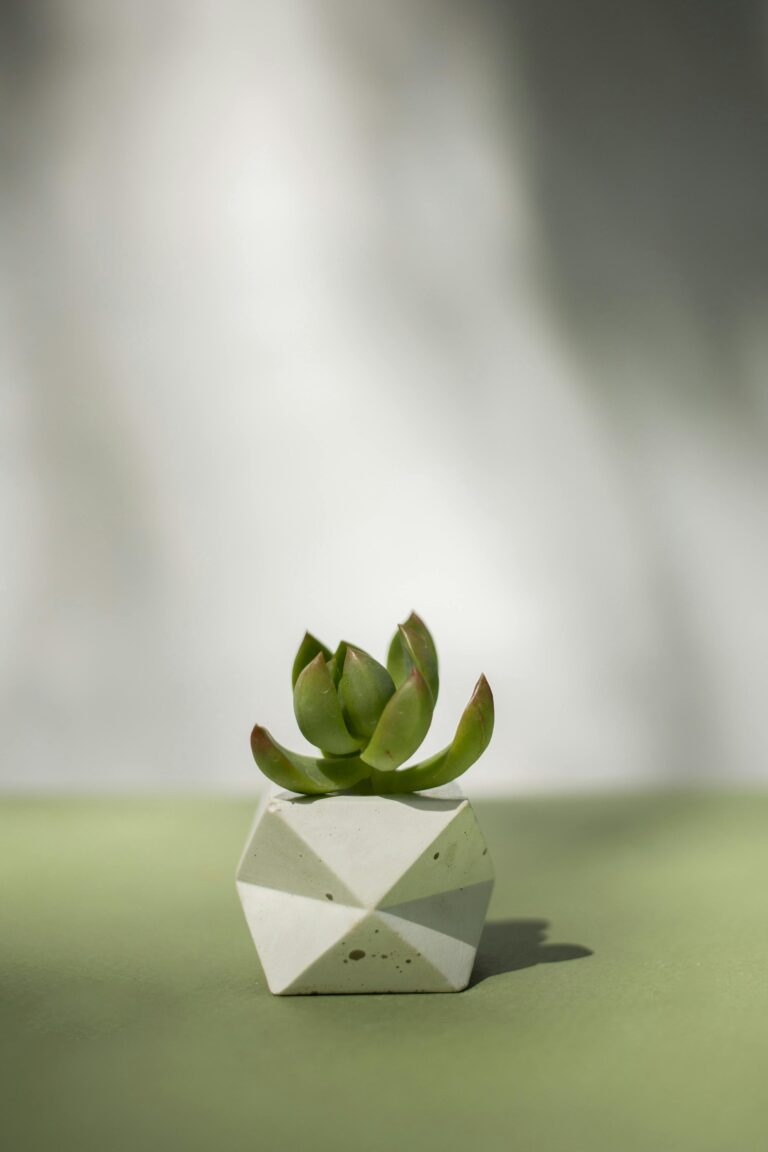
As you embark on this propagation journey, keep close the image of a new jade plant sprouting from your efforts—a symbol of both your green thumb and the boundless potential in every tiny Crassula leaf. Happy propagating!
Jade Plant Benefits and Symbolism
Envision a lush, verdant Crassula elegantly perched on your windowsill, its plump leaves symbolizing prosperity and serenity. This isn’t just any plant; it’s the Crassula Jade, often hailed as the quintessential symbol of good fortune. Its presence in a home or office is more than just a nod to aesthetics; it’s a bastion of positive energy and a purveyor of a myriad of benefits.
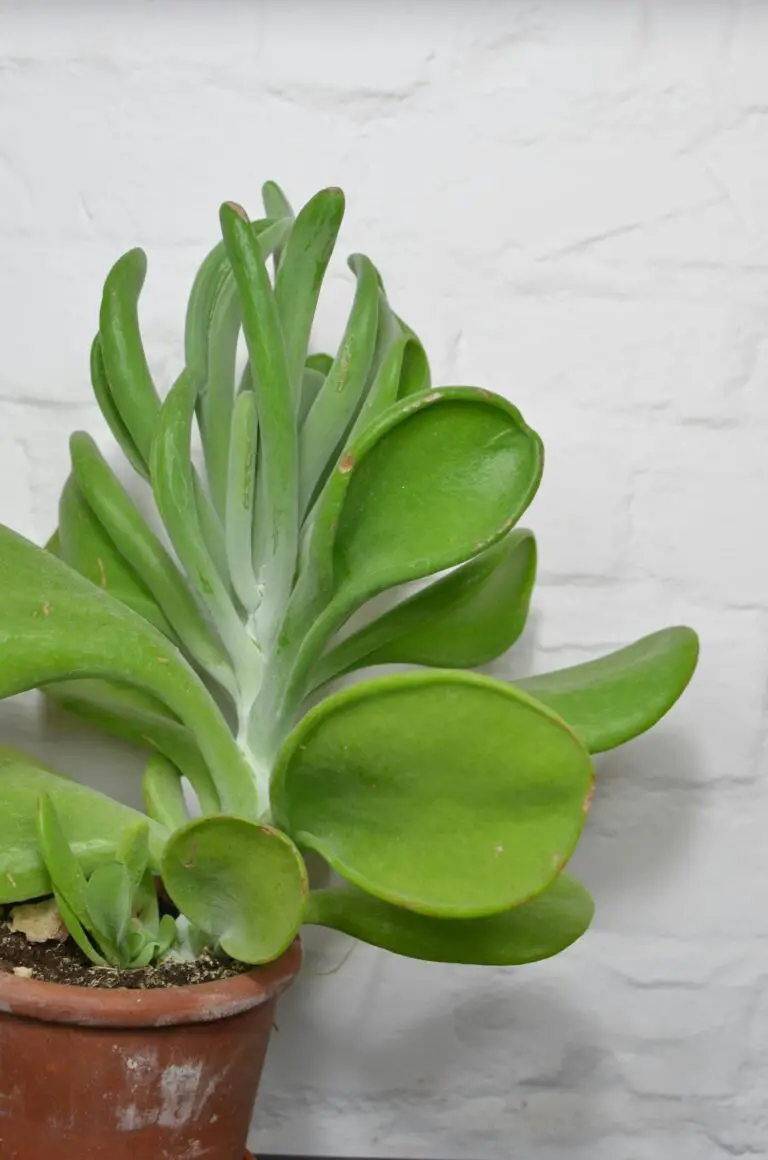
Loved for its low-maintenance yet striking appearance, the Crassula Jade plant is a storied succulent that carries deep cultural significance. In feng shui, these plants are believed to attract wealth and prosperity. It’s common to place them near the entrance of a business to beckon success, or in the wealth corner of a home to amplify financial stability. Imagine each firm, rounded leaf storing not just water, but small reservoirs of good tidings.
But the Crassula’s blessings don’t halt at monetary gains. The verdant leaves represent growth and renewal, making it an ideal gift for new business owners or as a housewarming present, embodying the start of prosperous new beginnings. In some cultures, the strong woody stems of the Jade plant are viewed as symbols of deep friendship and enduring relationships—rooted in strength, growing with love.
The practical benefits of this robust succulent are also quite impressive. Its capacity to purify the air is particularly valuable in our increasingly urbanized lives. It’s known to absorb harmful toxins, providing you with a breath of freshness in the concrete jungle. Additionally, its resilience and vitality are often mirrored in its owners, gently reminding us of the durability of life and our ability to thrive in challenging conditions.
While the Crassula may be a beacon of positivity, its care regimen is refreshingly straightforward. In a world brimming with complexity, the simple joy of nurturing a Crassula that thrives on the barest of essentials can be incredibly grounding. Think of it as nature’s nudge to keep life uncomplicated—hydrating it with the occasional shower of water and bathing it in the sun’s nurturing rays.
The vivid charm of the Crassula Jade plant is as undeniable as its symbolism. It’s not merely a decorative piece; it’s a living emblem of well-being and abundance. As sunlight filters through its jade-like leaves, casting a warm glow across your room, the Crassula turns everyday spaces into havens of peace. In the bustling dance of life, it’s the silent incantation of serenity—a tangible whisper of green promising to turn fortunes ever so gently in your favor.
Troubleshooting Common Problems with Crassula Plants
Crassula, often dubbed as the quintessential Jade plant, is a robust succulent that brightens up indoor spaces and thrives with minimal fuss. However, like any other plant, Crassula is not immune to troubles. Whether you’re a seasoned Jade plant collector or a novice gardener, identifying and dealing with common issues early on is pivotal to the longevity and luster of these succulents.
Pests: The Tiny Terrors
Imagine you’ve just spotted a constellation of tiny pests on your Crassula — a horde of aphids or spider mites turning your jade-tinged haven into a battleground. First, isolate your affected plant to prevent an epidemic. Shield your Crassula by deploying insecticidal soaps or neem oil, a natural deterrent that’s like kryptonite to these minuscule marauders. Regular inspections of your plants can nip pest problems in the bud, keeping your succulent sanctuary serene.
Diseases: Battling the Invisible Foe
When it comes to diseases, overwatering your Crassula can invite fungal diseases such as root rot, which stealthily compromises the plant’s foundation. Your once vibrant Crassula becomes a wilting, discolored shadow of its former self. The best counterattack? A strict watering regimen that lets the soil dry out between waterings. Remember, Crassula’s are drought-tolerant warriors; they prefer to err on the side of underwatering than to drown in excess moisture.
Environmental Stress: Keeping Your Cool
Environmental stress can turn your resilient Crassula into a finicky diva. Too much direct sunlight might scorch its leaves, while inadequate light can etiolate it, stretching the plant towards elusive rays in a desperate search for light. Strike a balance with a spot that bathes your Crassula in bright, indirect light. It’s also essential to keep the temperature and humidity levels consistent — think Mediterranean climate, not tropical rainforest.
If you’re keen on visual guides to provide a deeper understanding of your Crassula’s woes, here’s a video that delves into the reasons behind leaf drop in Jade plants, one of the common symptoms your plant might exhibit when faced with adversity.
Become a Crassula whisperer by tuning into your plant’s needs and responding with the right care. With these troubleshooting tips at your disposal, you’ll be equipped to ensure your Crassula, the epitome of Jade plants, thrives in its pot and brings you years of joyous greenery.
Frequently Asked Questions
You’ve probably seen the thick, glossy leaves of the Crassula plant perched elegantly in sunlit windows or gracing the pages of chic interior design magazines. But let’s dive into the nitty-gritty: Is Crassula the same as the jade plant we all adore for its low-maintenance charm? Let’s address the burning questions you might have, one succulent tip at a time.
Is Crassula Really the Jade Plant?
Imagine stepping into a garden center and spotting a Crassula. It’s lush, it’s green, it’s—wait, isn’t this a jade plant? Well, here’s the scoop: Crassula is a large genus of succulent plants, and one star member of this group is Crassula ovata, the classic jade plant. So yes, while not all Crassulas are jade plants, the one you’re thinking of with those plump, oval leaves probably is!
How Do I Care for My Crassula to Keep It Thriving?
Think of your Crassula like that friend who thrives on minimal fuss. It loves a sunny spot with some indirect light and isn’t too picky about its water schedule—just a drink when the soil feels dry to the touch. Overwatering? That’s a fast track to root rot, so let’s not drown the friendship, shall we?
Can Crassula Survive in Colder Climates?
Picture this: You’re wrapped in your thickest scarf, bracing against a chilly breeze. Your Crassula, however? It prefers to stay snug indoors when the temperature drops. While a true adventurer at heart, Crassula isn’t keen on frost. Keep it away from cold drafts and frosty windowsills to maintain its spunky spirit.

Will My Jade Plant Blossom with Flowers?
Under the right conditions—enough light, not too much water, and a little bit of plant whispering—your Crassula might just surprise you with delicate star-shaped flowers. It’s like a secret handshake between you and your plant to say, ‘Yeah, we’ve got this gardening thing down.’
How Long Will My Crassula Last?
Ever heard of a plant heirloom? That’s your Crassula. With proper care, it can outlive your favorite jeans, becoming a cherished part of your home decor for years, maybe even decades. Talk about a leafy legacy!
Should I Be Concerned About Pests with Crassula?
It’s true, Crassula, like any model organism, might attract an admirer or two—mealybugs and spider mites, specifically. The good news is, they’re more like clingy exes than serious threats. A quick swipe with soapy water, and it’s goodbye pests, hello again, plant paradise!
Now, armed with these answers, you’re well on your way to becoming a Crassula connoisseur. Remember, whether it’s a jade plant or another member of the Crassula family sitting on your shelf, it’s all about enjoying the simple, green joys of succulent parenting!
